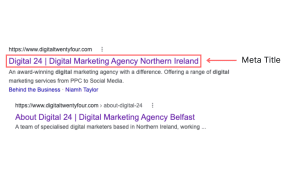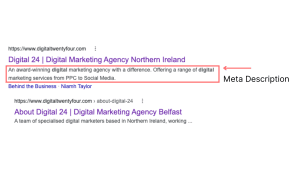If you want to improve your website’s ranking in search engine results pages (SERPs), keyword research is essential. By targeting keywords that potential customers are searching for, you can increase traffic to your site and boost sales.
Keyword research can seem daunting, but it doesn’t have to be difficult. In this guide, we’ll show you how to do keyword research for SEO step-by-step, so you can get started right away. We’ll also give you some tips on how to use keywords once you’ve found them, so you can make the most of your SEO efforts.
Why is keyword research important for SEO?
There are many benefits of conducting keyword research for your SEO strategy. By understanding which keywords to target, you can ensure that your website is visible to potential customers when they search for terms related to your business. Additionally, keyword research can help you identify new opportunities for content and product development. Finally, by monitoring changes in keyword difficulty, you can keep your SEO strategy up-to-date and adjust your tactics as needed.
What are the different types of keyword research?
There are a few different types of keyword research that you can conduct in order to support your SEO efforts. First, you can brainstorm potential keywords by considering what terms your customers might use to find your business online. Second, you can check the difficulty of various keywords in order to identify which ones will be most effective for your website to target. You can also analyze search intent in order to understand why people are searching for certain keywords and how best to respond to those queries. Finally, you can identify long-tail keywords, which are specific and often less competitive than more general terms.
How to do keyword research for SEO
Brainstorm keywords
The first step in keyword research is to brainstorm a list of potential keywords. To do this, think about the products or services you offer and the topics related to them. For example, if you sell health supplements, some potential keywords could be “vitamins”, “minerals”, or “herbal supplements”.
You can also use tools like Google AdWords Keyword Planner and Ubersuggest to generate a list of keywords. These tools will show you how many people are searching for each keyword, as well as the amount of competition.
Once you have a list of potential keywords, it’s time to move on to the next step.
Checking keyword difficulty
The next step is to check the keyword difficulty for each of your potential keywords. This will give you an idea of how difficult it will be to rank for that keyword. There are a few different tools you can use to check keyword difficulty, but my personal favourite is Moz Keyword Exploreror.
To check the difficulty of a particular keyword, simply enter it into the tool, and Moz will give you a score from 1-100. The higher the score, the more difficult it will be to rank for that keyword. In general, you want to target keywords with a difficulty score of 60 or below.
Analyzing search intent
The next step is to analyze the search intent for each of your potential keywords. This will give you an idea of what people are looking for when they search for that keyword. There are four main types of search intent: navigational, informational, commercial, and transactional.
In general, you want to target keywords with commercial or transactional intent, as these are the people most likely to buy your products or services.
Identifying long-tail keywords
The next step is to identify long-tail keywords. Long-tail keywords are longer, more specific keywords, and that makes ranking for them less competitive. For example, a long-tail keyword for “vitamins” could be “best vitamins for energy” or “cheap vitamins online”.
To find long-tail keywords, you can use a tool like Google AdWords Keyword Planner or Ubersuggest. Simply enter your main keyword into the tool and it will generate a list of long-tail keywords for you.
Grouping keywords
The final step in keyword research is to group your keywords into related groups. This will make it easier to target these keywords in your SEO campaign. For example, you could group all of your vitamin keywords together, all of your mineral keywords together, and all of your herbal supplement keywords together.
To do this, simply create a spreadsheet with three columns: keyword, group, and difficulty score. Then start assigning each keyword to a group and give each group a difficulty score based on the average difficulty of the keywords in that group.
How to use keywords in SEO
Title tags and meta descriptions
One of the most important places to use keywords for SEO is in your website’s title tags and meta tags. Meta Title tags are the short descriptions that appear in the search engine results pages (SERPs), while meta descriptions are the longer text that appears on your website’s page.


Including relevant keywords in your title tags and meta tags helps signal to Google what your website is about and can help you rank higher in the SERPs.
Use keywords throughout your website’s content
In addition to incorporating keywords into titles and meta tags, you should also use them throughout the body of your website’s content – though again, don’t go overboard with this or you could be penalized by Google for keyword stuffing. A good rule of thumb is to use each keyword 1-3% of the time throughout your content pieces. So if you have a 1000-word blog post, aim to use each keyword around 10 times total throughout the piece.
Where you place those keywords also matters: putting them towards the beginning of sentences or headlines carries more weight than placing them later on. And using them in alt text for images or videos helps improve both user experience and search visibility for image searches and video searches, respectively.
Optimize your website for voice search
More people are using voice search nowadays, thanks to digital assistants like Siri, Alexa, and Cortana. If you’re not thinking about how users might be searching by voice instead of typing, then you’re missing out on traffic potential from people who say things like “Alexa, show me how to do yoga” instead of punching in “yoga classes near me.” It’s not enough anymore to only optimize for written text.



